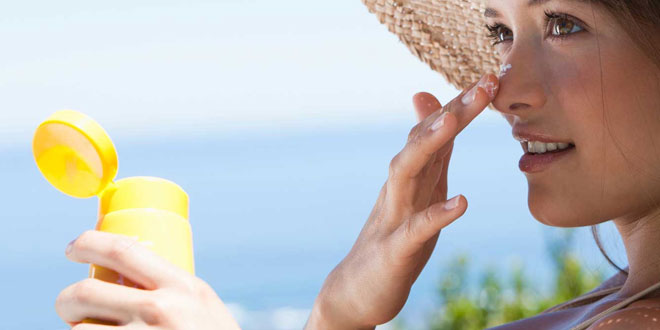
Choosing the Best Sunscreen
Sunscreens shield you from the sun’s unsafe ultraviolet (UV) rays in two ways. Some work by diffusing the light, reflecting it far from your body. Others absorb the UV rays before they reach your skin.
Earlier, picking a decent sunscreen implied you just searched for a high sun protection factor (SPF) – which rates how well the sunscreen ensures against one sort of cancer creating UV rays, ultraviolet B (UVB.) SPF indicates to being an obstacle of UVB rays as it were.
So which is the best sunscreen for you? Obviously, you’ll need a sunscreen with a wide range or multi-range protection from both UVB and UVA. Components with broad spectrum protection includes benzophenones (oxybenzone), cinnamates (octylmethylcinnamate and cinoxate), sulisobenzone, salicylates, titanium dioxide, zinc oxide, avobenzone (Parsol 1789) and ecamsule (Mexoryl SX).
Amount of Sun Exposure:
For accidental sun exposure— when you are outside just for quite a long time at once — a sun protection factor (SPF) of 15, which reflects 93 percent of UV radiation, is generally adequate. Your sunscreen ought to have wide range protection, which means it viably ensures against noteworthy segments of both the ultraviolet A (UVA) and ultraviolet B (UVB) rays.For expanded, serious exposure, use a broad-spectrum, water-safe sunscreen with an SPF of 30 or higher. SPF 30 reflects up to 97 percent of the sun’s UV radiation; SPF 50 up to 98 percent.
What’s the correct type of sunscreen to use?
kid friendly sunscreen
Chemicals can irritate kids’ delicate skin; PABA and oxybenzone specifically have been connected with skin reactions. kids’ sunscreens use ingredients that are less likely to irritate the skin. Unlike chemical ingredients, these protect kids’ skin without being absorbed.
For sensitive, skin inflammation , and acne prone skin:
People with hypersensitive skin or conditions, such as, skin breakouts, must avoid items containing additives or scents, and in addition those containing PABA or oxybenzone. Once more, the fixings most drastically averse to bring about skin responses are the physical sunscreens, and in addition those made with salicylates and ecamsule. Allergy inclined and people with ought to likewise stay away from sunscreens containing alcohol. People with skin inflammation, notwithstanding, may discover gel equations, which as a rule contain alcohol, additionally drying and less inclined to exasperate skin break out. People with a skin type prone to breakouts should stay away from oily sunscreens (regularly showcased as “creams”), since they may compound breakouts; the UVB channel ensulizole has a lighter, less slick consistency than most other concoction sunscreens. However, individuals on topical skin breakout MEDs, which have a tendency to dry, may discover gels excessively irritating and may benefit by a light moisturizer or cream base. Since, some skin breakout prescriptions expand sun affectability, making wearers more helpless against burning and skin harm. Therefore daily sun protection is particularly imperative.
For dry skin:
Dry skin can be saved by moisturizing sunscreens. Various lotions are utilized as a part of sunscreens; well-known ones incorporate lanolin, oils, and silicones, for example, dimethicone. Skin hydrating sunscreens are frequently defined as creams, salves, or treatments, so search for these terms on the mark.
For individuals with melasma, a background marked by cancer, or fair skin:
For people with a messy chestnut staining of the skin called melasma, the individuals who have had a skin disease, or the individuals who are reasonable, sunscreen with a SPF of 30+ is suggested, daily, for additional protection. Since the vast majority don’t really apply enough sunscreen to accomplish the SPF recorded on the compartment, continuous re-application (following two hours out of entryways or quickly subsequent to swimming or sweating intensely) is particularly vital.
For darker skin tones:
Individuals with darker skin who tan effortlessly and once in a while burn, may feel they don’t have to use sunscreen. Be that as it may, similar to sunburn, a tan is the aftereffect of DNA harm from exposure to the sun’s harmful UV radiation. Darker-cleaned individuals may likewise be careful about utilizing sunscreens, particularly titanium-based items, since they can look pale and white on the skin. Newer arrangements, be that as it may, have a tendency to be micronized, which implies the particles are sufficiently little to permit them to mix in and vanish into the skin. Compound sunscreens are likewise a choice; search for a wide range sunscreen with an SPF of 15+.
For the older individuals:
Although more aged people may have officially gotten a lot of UV light exposure in their lifetime, they can even now benefit from sunscreen use. At any age, unprotected sun builds the danger of growing new skin cancer and pre-cancers; it additionally quickens skin maturing, prompting age spots, wrinkles, sagging, and rough skin. More seasoned individuals with diminished versatility may experience considerable difficulties sunscreen to territories, for example, the legs and back; for them, shower on sunscreens might be an incredible choice — they are presently accessible both in synthetic and physical plans. Spray ought to be used until an even shine shows up on the skin.
Sunscreen is very important to use, especially for those that live in the warmer climates of the world to be safe from UV rays that could more damage than just a tan!

